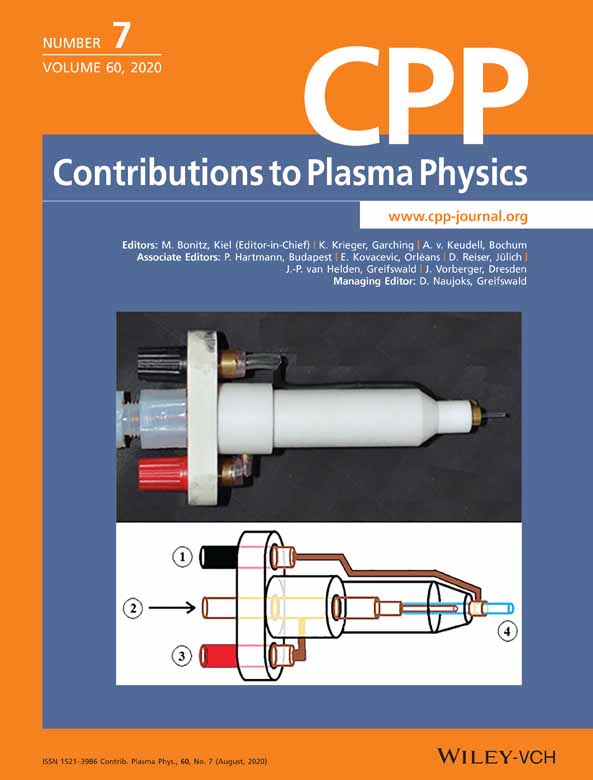Experimental and numerical fitting of model parameters versus the gas pressure using six phase radiative Lee model in AECS PF-1, 2 and INTI PF for nitrogen, argon, and neon gases
Abstract
Atomic energy commission of syria (AECS) PF-1, 2 devices were operated in N2 and Ar gases at pressures varied between 0.1–1 mbar and applied voltage of 15 kV on the capacitors bank with capacitance of 25 μF. The voltage, current, and current derivative curves were digitally recorded by Ohmic voltage divider and two Rogowskii coils; one with a big number of turns for current and the other one with a low number of turns for the current derivative. Also, the current curve for the discharge as LCR circuit was recorded to calibrate the current measurement. By integrating the current derivative in time and using the curve of calibrated current, the current curve free of noise has been established. By inserting the geometrical and electrical parameters of two AECS PF-1, 2 devices, the working gas pressure and the kind of the gas into six phase model which describes the instability in the plasma, and adding the anomalous resistance as a term in the current and voltage equations in the model; the computed curves for voltage and current were found and compared with the obtained experimental curves at the same conditions taking into account the readjustment of model parameters fm, fc, fmr, and fcr until getting a good fitting between the measured and computed currents. This fitting has proved the validity of six phase Lee model and its ability to give a description of plasma focus in the radial phase stage (which consists now of four subradial phases: radial inward shock, radial reflected shock, the pinch phase, and after that the instability phase), which is followed by the expanded phase of plasma focus. In parallel to our work, similar efforts were made on the INTI PF device in Ne; the validity of six phase Lee model was proved by getting a proper fitting between the measured and computed currents under the operational conditions. Moreover, the equivalent resistances and time scales of the anomalous resistance phases were obtained by this method; also, the ratios for PF device classification into two types according to the static inductance of the PF system were determined for N2 and Ar as working gases in AECS-PF1, 2.




